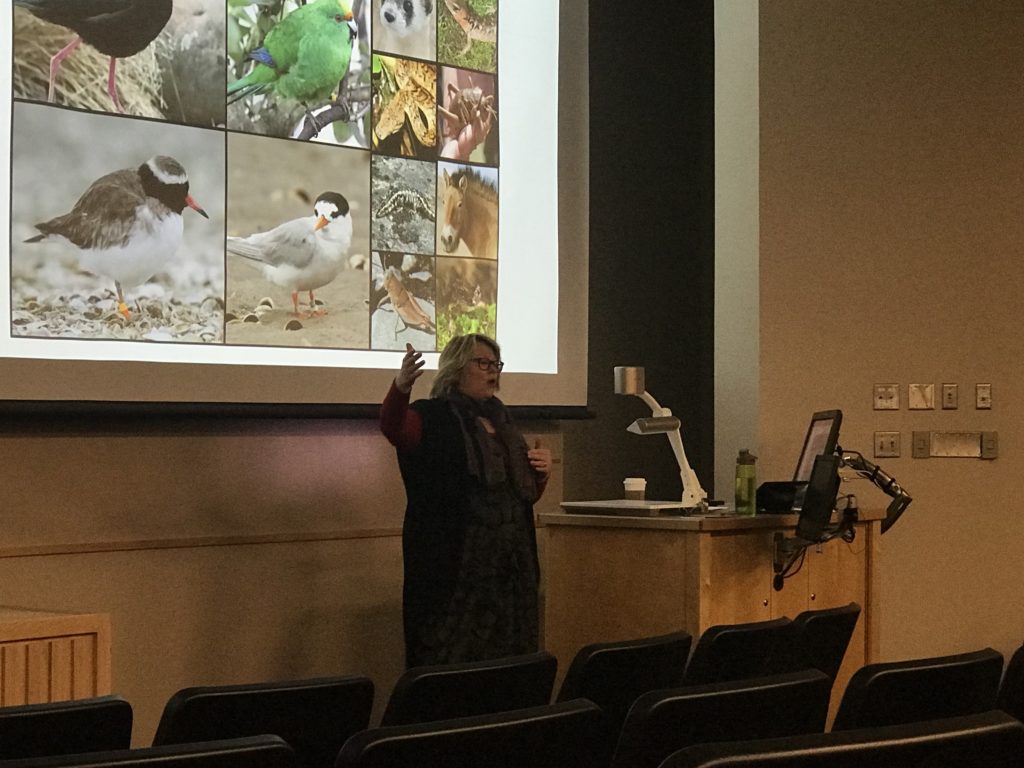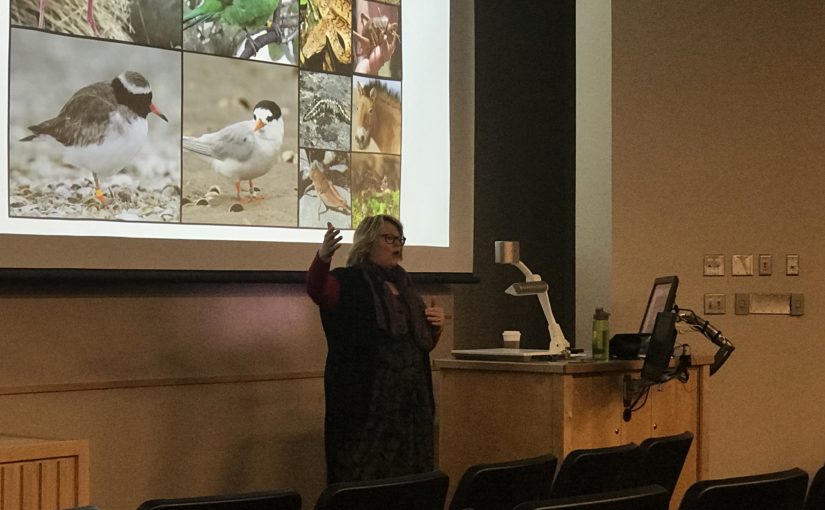
Tammy Steeves has found her passion in restoring bird populations that are at risk of extinction.
On Friday, Nov. 8, the North Dakota State department of biological sciences hosted a presentation by Tammy Steeves regarding “Maximizing Genetic Diversity in Captive Breeding in Translocation Programs in Threatened New Zealand Birds.” Steeves, an associate professor and postgraduate coordinator of biological sciences at the University of Canterbury Christchurch, New Zealand, is a conservation genetics expert whose research focus is on conservation and evolutionary genetics.
Steeves, along with two other scientists, has studied the conservation and evolutionary genetics of New Zealand birds for the past two years.
“The reason why we care about conservation genetics and why we want to use genetic or genomic tools to inform conservation is because we have short, long and ultimate term goals,” Steeves said. “Our goals are to minimize inbreeding, inbreeding depression and ultimately are these small isolated populations going to be able to adapt to future change.”
Steeves and her partners’ end goal is to make the bird populations genetically diverse so they are able to adapt to future change.
“If a species’ population cannot adapt, then they will go extinct,” Steeves said.
For the past two to three years, Steeves and her team have moved away from taking a conservation genetics approach to a conservation genomics approach.
“In the past when we were using a conservation genetics approach, we were looking at basically a handful of genetic marker puzzle pieces, which we acknowledged at the time that we were only looking at a tiny fraction of the genome, but now we can analyze tens of thousands genomic markers to answer questions we’ve been wanting answered,” Steeves said.
“If a species’ population cannot adapt, then they will go extinct,” – Tammy Steeves, professor and postgraduate coordinator of biological sciences at the University of Canterbury Christchurch, New Zealand
Now with new genomic technology, Steeves said they can answer questions that were basically impossible to answer before, such as adaptive variation and things that natural selection can act upon in order to make informed conservation decisions to maximize adaptability in the species that they are working with.
“We are very, very at the beginning stages of conservation genomics,” Steeves said. “At one point, there were more reviews of conservation genomics than there were empirical conservation genomic papers.”
Steeves’ main research right now is about the New Zealand kaki bird. They are critically endangered and endemic, only found only in New Zealand.
“They used to be found in the North and South Island (of New Zealand), but over time their distribution has become more and more restricted,” Steeves said.
In 1981, there were only 23 adult kaki birds in the world. Due to Steeves and her team’s efforts, the last census of the birds in 2017 found 106 kaki birds known to be alive.
“This particular project is focused in on how do we improve conservation outcomes for captive breeding for translocation programs that struggle to put together good pedigrees,” Steeves said. “It’s not that they are incompetent, it’s just that it is really, really hard when you have a captive breeding for translocation breeding program.”
There are over 400 endangered species programs currently, however, there are less than 20 translocation breeding programs. Translocation programs are more successful at producing large amounts of animal offsprings in captivity that are released into the wild compared to other programs, such as zoos that have a low success rate in actually releasing animals back into the wild.
“Eventually, we don’t want any captive breeding programs for kaki. We want them out and breeding in the wild,” Steeves said.
